Dhr96[1] mutation and maternal tudor[1] mutation increase life span and reduce the beneficial effects of mifepristone in mated female Drosophila
- PMID: 38127988
- PMCID: PMC10735022
- DOI: 10.1371/journal.pone.0292820
Dhr96[1] mutation and maternal tudor[1] mutation increase life span and reduce the beneficial effects of mifepristone in mated female Drosophila
Abstract
Mating and receipt of male Sex Peptide hormone cause increased egg laying, increased midgut size and decreased life span in female Drosophila. Feeding mated females with the synthetic steroid mifepristone decreases egg production, reduces midgut size, and increases life span. Here, several gene mutations were assayed to investigate possible mechanisms for mifepristone action. Drosophila Dhr96 is a hormone receptor, and a key positive regulator of midgut lipid uptake and metabolism. Dhr96[1] null mutation increased female life span, and reduced the effects of mifepristone on life span, suggesting that Dhr96[1] mutation and mifepristone may act in part through the same mechanism. Consistent with this idea, lipidomics analysis revealed that mating increases whole-body levels of triglycerides and fatty-acids in triglycerides, and these changes are reversed by mifepristone. Maternal tudor[1] mutation results in females that lack the germ-line and produce no eggs. Maternal tudor[1] mutation increased mated female life span, and reduced but did not eliminate the effects of mating and mifepristone on life span. This indicates that decreased egg production may be related to the life span benefits of mifepristone, but is not essential. Mifepristone increases life span in w[1118] mutant mated females, but did not increase life span in w[1118] mutant virgin females. Mifepristone decreased egg production in w[1118] mutant virgin females, indicating that decreased egg production is not sufficient for mifepristone to increase life span. Mifepristone increases life span in virgin females of some, but not all, white[+] and mini-white[+] strains. Backcrossing of mini-white[+] transgenes into the w[1118] background was not sufficient to confer a life span response to mifepristone in virgin females. Taken together, the data support the hypothesis that mechanisms for mifepristone life span increase involve reduced lipid uptake and/or metabolism, and suggest that mifepristone may increase life span in mated females and virgin females through partly different mechanisms.
Copyright: © 2023 Landis et al. This is an open access article distributed under the terms of the Creative Commons Attribution License, which permits unrestricted use, distribution, and reproduction in any medium, provided the original author and source are credited.
Conflict of interest statement
The authors have declared that no competing interests exist.
Figures



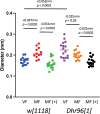
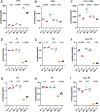
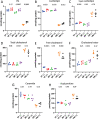
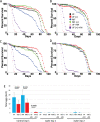
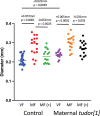

Similar articles
-
Mifepristone and rapamycin have non-additive benefits for life span in mated female Drosophila.Fly (Austin). 2024 Dec;18(1):2419151. doi: 10.1080/19336934.2024.2419151. Epub 2024 Oct 23. Fly (Austin). 2024. PMID: 39440794 Free PMC article.
-
Metabolic Signatures of Life Span Regulated by Mating, Sex Peptide, and Mifepristone/RU486 in Female Drosophila melanogaster.J Gerontol A Biol Sci Med Sci. 2021 Jan 18;76(2):195-204. doi: 10.1093/gerona/glaa164. J Gerontol A Biol Sci Med Sci. 2021. PMID: 32648907 Free PMC article.
-
Mifepristone Increases Life Span of Virgin Female Drosophila on Regular and High-fat Diet Without Reducing Food Intake.Front Genet. 2021 Sep 24;12:751647. doi: 10.3389/fgene.2021.751647. eCollection 2021. Front Genet. 2021. PMID: 34659367 Free PMC article.
-
A screen of small molecule and genetic modulators of life span in female Drosophila identifies etomoxir, RH5849 and unanticipated temperature effects.Fly (Austin). 2022 Dec;16(1):397-413. doi: 10.1080/19336934.2022.2149209. Fly (Austin). 2022. PMID: 36412257 Free PMC article.
-
Mifepristone/RU486 acts in Drosophila melanogaster females to counteract the life span-shortening and pro-inflammatory effects of male Sex Peptide.Biogerontology. 2017 Jun;18(3):413-427. doi: 10.1007/s10522-017-9703-y. Epub 2017 Apr 27. Biogerontology. 2017. PMID: 28451923 Free PMC article.
Cited by
-
Mifepristone and rapamycin have non-additive benefits for life span in mated female Drosophila.Fly (Austin). 2024 Dec;18(1):2419151. doi: 10.1080/19336934.2024.2419151. Epub 2024 Oct 23. Fly (Austin). 2024. PMID: 39440794 Free PMC article.
-
Conditional Inhibition of Eip75B Eliminates the Effects of Mating and Mifepristone on Lifespan in Female Drosophila.Cells. 2024 Jun 28;13(13):1123. doi: 10.3390/cells13131123. Cells. 2024. PMID: 38994975 Free PMC article.
-
Editorial: Mechanistic theories of aging.Front Aging. 2025 May 12;6:1617783. doi: 10.3389/fragi.2025.1617783. eCollection 2025. Front Aging. 2025. PMID: 40420957 Free PMC article. No abstract available.
References
-
- Wu XJ, Sun XH, Wang SW, Chen JL, Bi YH, Jiang DX. Mifepristone alleviates cerebral ischemia-reperfusion injury in rats by stimulating PPAR gamma. Eur Rev Med Pharmacol Sci. 2018;22(17):5688–96. - PubMed
MeSH terms
Substances
Grants and funding
LinkOut - more resources
Full Text Sources
Molecular Biology Databases

